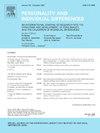青少年从被动攻击到主动攻击的动态变化:多层次链式中介模型
IF 3.5
2区 心理学
Q1 PSYCHOLOGY, SOCIAL
引用次数: 0
摘要
长期以来,反应性攻击和主动性攻击一直是公众日益关注的问题,也是两种相互关联的现象。基线时反应性攻击的程度可以预测随后主动攻击的可能性。然而,人们对反应性攻击和主动性攻击之间关系的潜在动机机制仍然知之甚少,尤其是通过实验研究。为了解决这一研究局限性,我们在实验设计中采用了竞争性反应时间任务和奖励干扰任务来操纵反应性攻击和积极结果预期,研究对象为 125 名青少年(年龄 = 16.06;标准差 = 0.67;50% 为女生)。通过重复测量方差分析,我们发现,与低反应性攻击行为组的参与者相比,高反应性攻击行为组的参与者后来表现出更高的主动性攻击行为,目的是获得相同的金钱奖励。此外,与低度和中度组的参与者相比,高度积极结果预期组的参与者也表现出更高的主动攻击性。因此,通过多层次中介分析,我们证实了反应性攻击和主动性攻击之间由积极结果预期和道德脱离所中介的稳健关系。这项研究表明,干预计划应以降低积极结果预期和道德脱离为目标。本文章由计算机程序翻译,如有差异,请以英文原文为准。
The dynamics from reactive aggression to proactive aggression among adolescents: A multilevel chain mediating model
Reactive aggression and proactive aggression have long been growing public concerns and are two phenomena associated with each other. The magnitude of reactive aggression at baseline can predict the likelihood of subsequent proactive aggression. Yet, the potential motivation mechanisms of the relationship between reactive and proactive aggression remain little understood, especially through experimental research. To address this research limitation, the experimental design employed competitive reaction time tasks and reward-interference tasks to manipulate reactive aggression and positive outcome expectancy in a sample of 125 adolescents (Mage = 16.06; SD = 0.67; 50 % girls). Using repeated measures variance analysis, we found that compared to those in the low reactive aggression group, participants with high reactive aggression later showed higher proactive aggression aimed at the same monetary rewards. Furthermore, participants in the high positive outcome expectancy group also displayed higher proactive aggression, compared to those in the low and medium groups. Thereby, through multilevel mediation analysis, we confirmed robust relationships between reactive and proactive aggression mediated by positive outcome expectancy and moral disengagement. This study suggests that intervention programs should target the reduction of positive outcome expectancy and moral disengagement.
求助全文
通过发布文献求助,成功后即可免费获取论文全文。
去求助
来源期刊

Personality and Individual Differences
PSYCHOLOGY, SOCIAL-
CiteScore
8.50
自引率
4.70%
发文量
577
审稿时长
41 days
期刊介绍:
Personality and Individual Differences is devoted to the publication of articles (experimental, theoretical, review) which aim to integrate as far as possible the major factors of personality with empirical paradigms from experimental, physiological, animal, clinical, educational, criminological or industrial psychology or to seek an explanation for the causes and major determinants of individual differences in concepts derived from these disciplines. The editors are concerned with both genetic and environmental causes, and they are particularly interested in possible interaction effects.
 求助内容:
求助内容: 应助结果提醒方式:
应助结果提醒方式:


